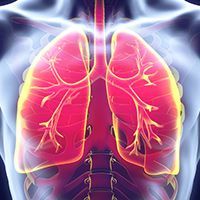Article
Trastuzumab Deruxtecan sNDA for HER2-Mutant Metastatic NSCLC Submitted for Review in Japan
Author(s):
Daiichi Sankyo has filed a supplemental new drug application with Japan’s Ministry of Health, Labor, and Welfare for the use of fam-trastuzumab deruxtecan-nxki in adults with previously treated HER2-mutant unresectable advanced or recurrent non–small cell lung cancer.

Daiichi Sankyo has filed a supplemental new drug application (sNDA) with Japan’s Ministry of Health, Labor, and Welfare (MHLW) for the use of fam-trastuzumab deruxtecan-nxki (Enhertu) in adults with previously treated HER2-mutant unresectable advanced or recurrent non–small cell lung cancer (NSCLC).
The sNDA is based on data from the phase 2 DESTINY-Lung02 trial (NCT04644237), and the phase 2 DESTINY-Lung01 trial (NCT03505710) published in The New England Journal of Medicine with updated data also presented at ESMO 2022. Findings from these trials also served as the basis for the agent to receive orphan drug designation by the MHLW in this population.
“The results of DESTINY-Lung01 and DESTINY-Lung02 have shown that ENHERTU demonstrates a clinically meaningful tumor response in patients with previously treated HER2 mutant non–small cell lung cancer,” Wataru Takasaki, PhD, executive officer, head of R&D Division in Japan, Daiichi Sankyo, said in a press release.
On August 11, 2022, the FDA granted an accelerated approval to trastuzumab deruxtecan for the treatment of adults with unresectable or metastatic NSCLC whose tumors have activating HER2 mutations, as detected by an FDA-approved test, and who have received prior systemic therapy. The regulatory agency based its decision on data from the randomized phase 2 DESTINY-Lung02 trial evaluating the safety and efficacy of trastuzumab deruxtecan in patients with HER2-mutant metastatic NSCLC with disease recurrence or progression during or after 1 or more anticancer therapy regimens including platinum-based chemotherapy.
Patients were randomly assigned 2:1 to 5.4 mg/kg of trastuzumab deruxtecan (cohort 1; n = 102) or 6.4 mg/kg of trastuzumab deruxtecan (cohort 2; n = 50). The primary end point of the trial was confirmed objective response rate (ORR) as assessed by blinded independent central review (BICR). Secondary end points included confirmed disease control rate (DCR), duration of response (DOR) and progression-free survival (PFS) assessed by investigator and BICR, investigator-assessed overall survival (OS) and safety.
The earlier DESTINY-Lung01 trial evaluated the efficacy and safety of 5.4 mg/kg or 6.4 mg/kg of trastuzumab deruxtecan in patients with HER2-mutant (cohort 2, n = 91) or HER2-overexpressing (cohorts 1 and 1a, n = 90), as defined as immunohistochemistry [IHC] 3+ or IHC 2+, unresectable or metastatic nonsquamous NSCLC relapsed from or refractory to standard treatment or for which no standard treatment is available.
The primary end point of the trial was confirmed ORR by independent central review. Key secondary end points included DOR, DCR, PFS, OS and safety.
“We look forward to working closely with the Japan Health Authority to bring the first HER2 directed therapy for lung cancer to physicians and patients, representing the third tumor type for which ENHERTU could potentially be approved for use in Japan,” Takasaki added.
Reference
- ENHERTU® supplemental new drug application submitted in Japan for patients with HER2 mutant metastatic non-small cell lung cancer. News release. Daiichi Sankyo. December 13, 2022. Accessed December 15, 2022. https://bit.ly/3uTVR5G








